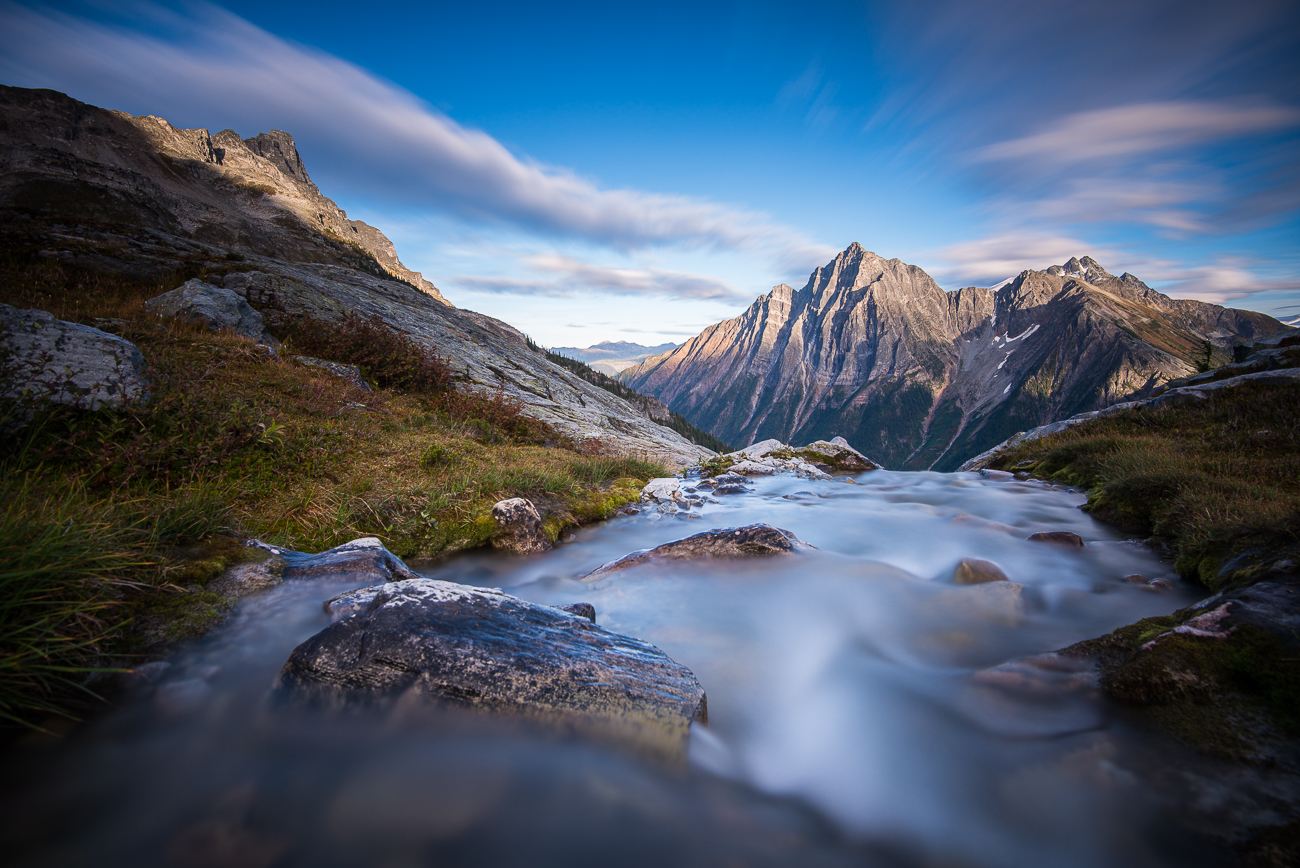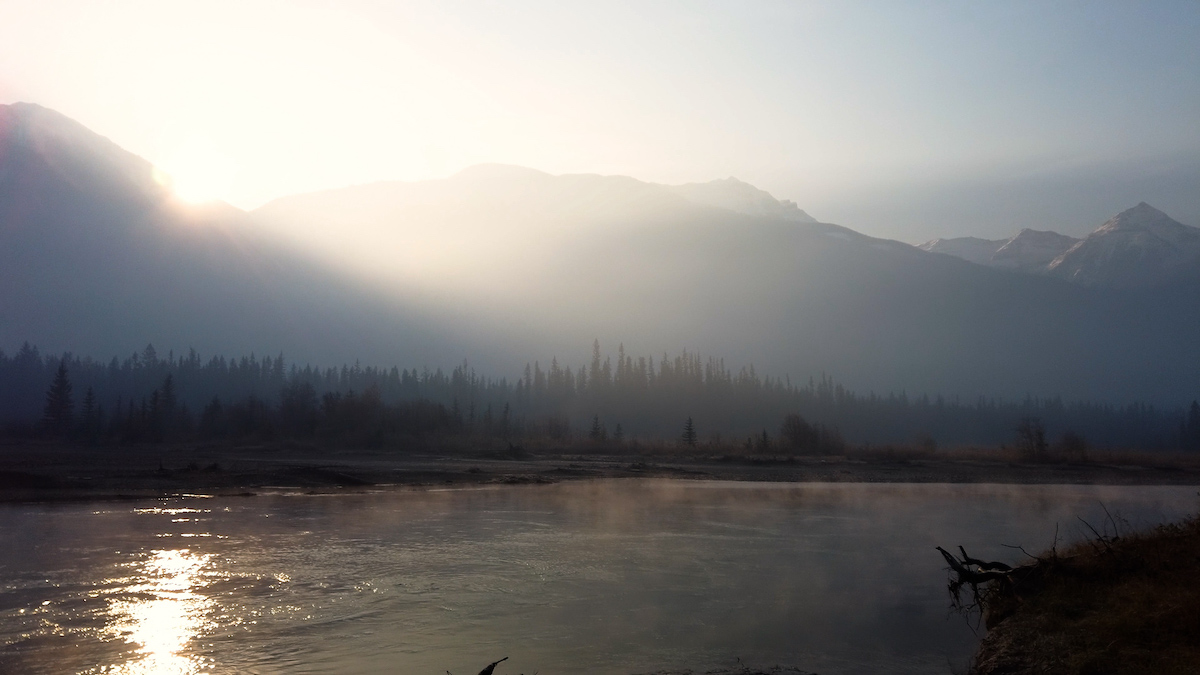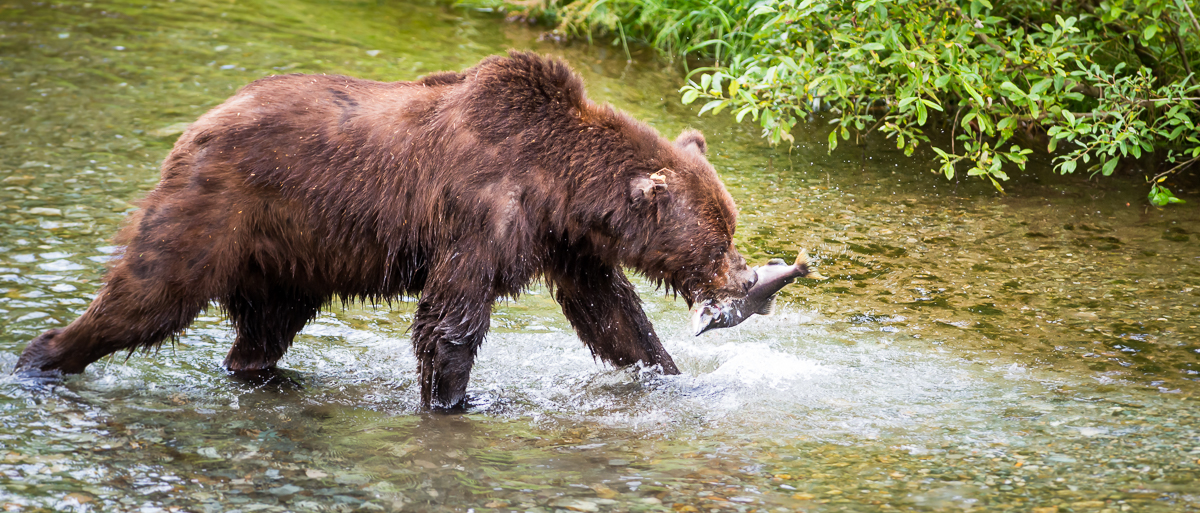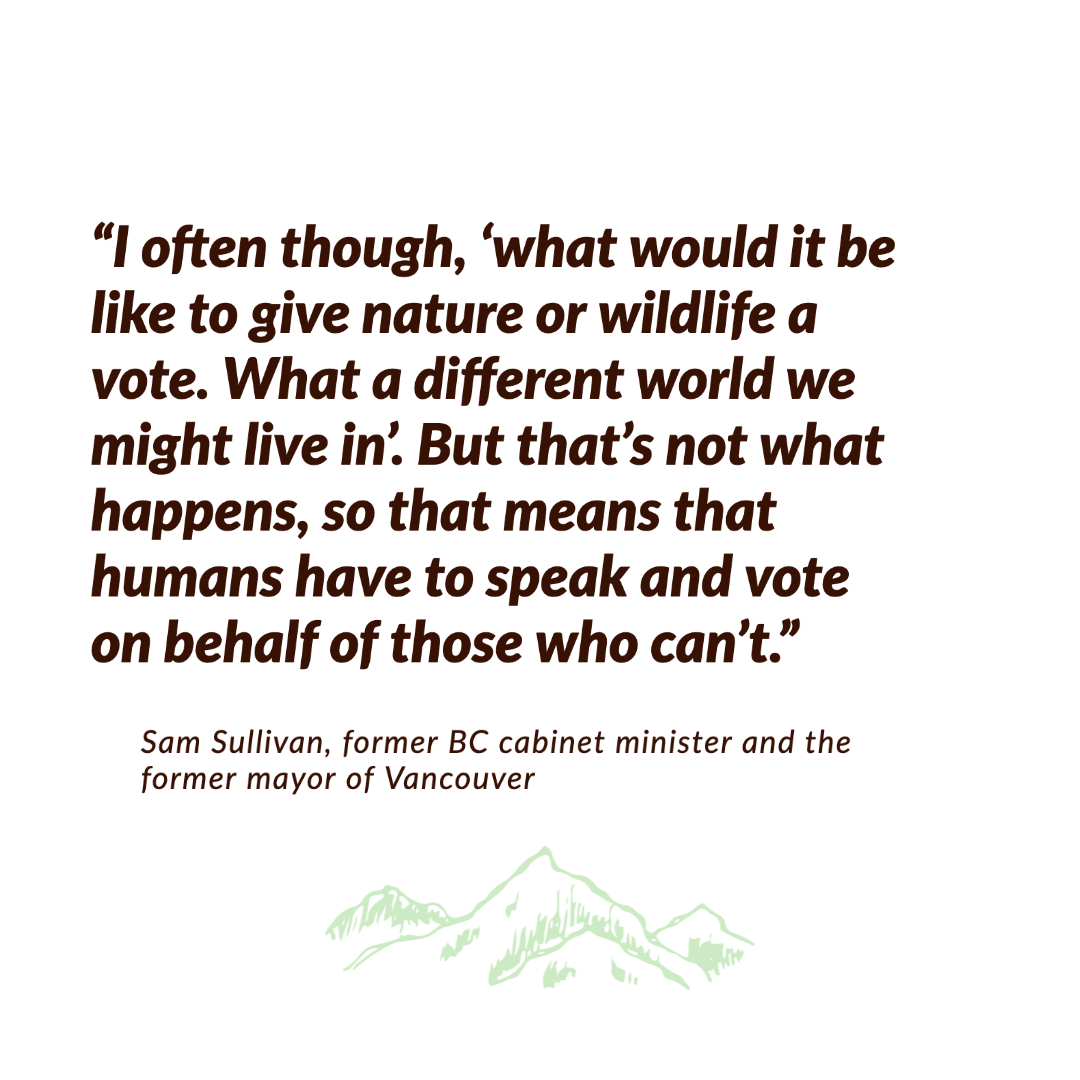Estimated Read Time: 15 minutes
Save the economy to save nature?
This class isn’t just theory; it’s not abstract.
This class is the foundation for understanding real issues in the real world – issues that affect you and me, today and tomorrow.
How so?
Well, for starters, it’s the code needed to decipher and understand what it will take to truly balance the needs of people and nature.
Does that matter?
Well, this challenge is as pressing as it is interwoven with other issues we face – problems like economic insecurity, social justice and democratic health.
By finding a better balance between people and nature, we can create a ripple effect of understanding and possibility to tackle other, at times, more divisive issues in our society.
Maybe you think: this isn’t a hard challenge – the solutions are obvious.
Yet nothing is as easy as we assume it should be, in part because even when we think problems are black and white – good versus evil – they rarely are. Almost every issue is maddeningly complex, made all the more difficult when emotions like uncertainty, anger, hopelessness and fear are added to the mix.
And about now, you might think, well, none of this is actually my problem. And it probably shouldn’t be.
But it is.
You see, not only are decisions being made today that will directly affect your future. Right now, you are also entering your years of peak creativity. But don’t just take my word for it. Here’s what Ilona Dougherty, co-founder of Apathy is Boring, has to say:
“Our brains are changing throughout our lives and young people at the age of 15 to 25 are at the height of their lifetime ability to be creative – to be innovative. These incredible abilities peak during that time of life and they have the full intellectual capacity of adults.”
As a student and co-creator of the Youth & Innovation Project at the University of Waterloo, Ilona’s ground-breaking research has proven that your ideas, with help and refinement, are the very ideas that can help create that better balance – that better tomorrow.
While you might feel that you’re just one student, without the power or influence to determine how late you can stay out on the weekend, let alone solve the world’s problems, but the reality is quite different.
“We underestimate young people all the time and we need to stop doing it,” says Ilona. “The research is very clear for young people to grow up to be healthy, engaged adults it’s all about having a sense of purpose and having an opportunity to make an impact.”
You’re powerful because of your age.
You can solve any problem we face because of your creativity.
“The only way to be a change maker is to be a change maker while you’re young. Young people have unique abilities while they are young that society needs.”
And we all need your creativity.

“Our most influential and impactful ideas will come from young people today who are growing up in this world.”
University of Calgary’s Aleem Bharwani is right. Adults – leaders – are so immersed in the problems we face they often can’t see the forest for the trees.
We need you to take a new look at old, if worsening, problems to see if there is something everyone else has missed.
We need you to understand how hard truths collide and find ways to do better by different peoples and different communities – do better for more people and for nature.
Because we can all agree that we need to do better.
Scientists have analyzed Earth’s record keeping system – fossils – to understand how often natural selection creates natural die-out – what’s known as the Background Extinction Rate. And though no one is certain – fossil records aren’t quite the Wayback Machine – most believe one species goes extinct per million species years.
Our current extinction rate, depending on what mathematical equation you believe and use, is ten to 10,000 times higher than the planet’s Extinction Background Rate – the ‘natural’ natural selection, if you will.
Which is a big spread, but consider this: Of the species that we know to have existed and disappeared during the last century, their loss should have taken 800 to 10,000 years to occur. Not the 100 years it actually took.
And that’s according to a study that used a “conservative background rate of two extinctions per million species-years”.
Globally, 32% of every known species is either decreasing in population, or range, or both. In fact, between 1970 and 2014, it’s believed that 60% of the totality of the Earth’s vertebrate wildlife populations has been lost.
In Canada, of the roughly 900 vertebrates we keep tabs on, about 50% are losing numbers – fast.
How fast?
Well, much faster than the rate globally. Since 1970, the average population loss of species in decline is more than 80%. It’s a major reason why more than 500 species are considered at risk by the federal government.
This has led some to conclude we’re entering a period of mass extinction – a cycle where roughly three quarters of all species disappear in a span of a few million years. There have been five in history – of course, the most famous being the one that whacked the dinosaurs.
If we’re entering a sixth mass extinction, unlike past extinction events, this one is human-caused, scientists tell us. But that is, of course, a debate and frankly, not a particularly helpful one.
Why?
Because the why distracts from the real issue: Un-natural natural selection at a rate well above the Background Extinction Rate means biodiversity loss.
“The bad news is that in most parts of the world, it is declining, and it’s declining at all levels.”
And that’s a problem for all life, including us, explains the United Nations’ former Deputy Executive Secretary of the Convention on Biological Diversity, David Cooper.
“Life on earth in the broader sense depends on biodiversity and the ecosystems that biodiversity makes up.”
And it’s not like there’s just one issue driving the global – or national – biodiversity decline.
Habitat loss. Pollution. A changing climate. The exploitation of wildlife. Invasive species. All of these are massive problems and each issue is connected to the others, making solutions even harder to come by.
“Addressing these issues is really important, but it’s hard. I don’t want that to be disempowering, but to recognize that these are complex issues.”
As David said, protecting biodiversity will be hard work and will require creativity. But here’s the good news: “We know though, that people are more likely to take action if they see other people also taking actions.”
But for every proposed solution, there’s a price tag. And in the wake of the global pandemic especially, there’s only so much money to go around.
Yet, without protecting nature, we run the risk of harming our prosperity, not to mention the very conditions of life that we require.
Which begs one of those age-old, chicken-or-the-egg questions:
Do we need to focus on the economy – even at the expense of nature – so we can afford to save biodiversity in the long-term? Or do we need to protect biodiversity – even at the expense of the economy – to sustain the very resources our economy depends on?

“The best answer I’ve ever heard is: it depends.”
Sam Sullivan is a seasoned politician – a political conservative who has served as the mayor of Vancouver and as a BC cabinet minister. He’s spent his life juggling chicken-or-the-egg questions like this one.
“I think everybody wants to have a healthy environmentally responsible province, but there are different opinions on how we weight each of those goals.”
And though he believes the best decisions don’t pit the environment versus the economy, Sam believes the best decisions – the ideas that endure – always account for the economy; “It is very useful to make sure you’re looking at the human needs, because remember, it’s humans that vote, and it’s humans that are running this government.”
Sam adds: “I often though, ‘what would it be like to give nature or wildlife a vote. What a different world we might live in’. But that’s not what happens, so that means that humans have to speak and vote on behalf of those who can’t.”
But for that to happen, Sam believes economic concerns need to be addressed first: “[The] environment has been often described as a full stomach issue. People have to have full stomachs before they start caring for the environment, and you can see that in many parts of the world, where if there’s terrible poverty and suffering, then people have very little interest in environmental policy.”
And maybe you agree or maybe you don’t, but Sam is a political realist. Also a realist? Angus Reid Institute’s Pollster-in-Chief, Shachi Kurl.
“These decisions are very much rooted in a matrix that start with your home economics – ‘can I afford my rent?’, ‘can I afford to feed my children?’, ‘am I worried about having a job next year?’”.
In other words, the present shouts and the future whispers.
“We are going to make the investments to move to an economy that can keep your stomach full. It sounded pretty good. We then experienced 4 years of economic chaos. All of that has an impact on whether you’re inclined to say, ‘yes, let’s continue to transition to a greener economy.’. No. It’s: ‘I’m really worried about my mortgage. The value of my house has really gone in the tank. I can’t find another job, so I can’t leave. How am I going to start over again? I am now economically trapped, and you want to talk to me about transitioning to a green economy?’. It’s a much tougher sell”. So I would agree with Sam on that front.”
It’s why Shachi says “if a consumer market made it very easy to take action on issues of understanding, respecting, observing, enhancing nature, if those were easy decisions, I think we’d be taking them. Even when they want to pick the right thing, it’s still a matter of your pocketbook, and that’s what always seems to win.”
Fin Donnelly understands the push-pull of the nature versus economy debate as well as anyone; “It’s important that we have definitely protected areas. We also need to have areas for humans and activities that humans do. It’s critical to get that balance right.”
Fin is Sam Sullivan’s political opposite – a former city councillor and former NDP Member of Parliament, Fin is now a BC Member of the Legislative Assembly and believes a better balance begins with protecting our natural assets.
“I think more has to be done to protect and conserve”
Fin’s beliefs took hold when he was young and swam – twice – the entire length of the Fraser River.

“It was the hardest thing I’ve ever done in my life. To swim from the headwaters to sea, 1,400km, leaving Mount Robson, with glacial fed waters that are so cold.”
The take away for Fin?: “The fact that we’re losing nature and that biodiversity at an alarming rate. We need to do something. We need to change.”
What to do? Well, according to Fin, he believes it’s starts with people recognizing the role nature plays in sustaining our way of life – our economy.
“It’s critically important that we understand why nature is so valuable. Once you don’t have clean water, you don’t have healthy soil, you aren’t able to see healthy, functioning ecosystems, then it’s not a good place to live.”
For proof, Fin says, look no further than the Fraser.
Fin tells us the peoples and communities that have been sustained along the river have benefited hugely from the protection of Mount Robson, “to have a headwater system protected is really important.”
But it’s not quite as simple as putting a border around a watershed.
“Fraser River Basin” by pfly is licensed with CC BY-SA 2.0. To view a copy of this license, visit here.
Elliott Ingles is the Area Supervisor for Mount Robson Provincial Park. And as he explains, Mount Robson?: “It’s so rich in biodiversity.”
You see, what makes this place function, in many ways, is its 182 bird species, 42 mammals, the four resident amphibians and one species of snake. But for these species to fulfil their ecosystems service – their ecological niche on the landscape – and allow Mount Robson to help sustain all life throughout the watershed and beyond, this park needs help, according to Elliott.
“What makes it really special, I think, is it’s in the middle of a massive protected area – being Jasper to the east, Kakwa in the west. We’ve got a chain of unbroken protected areas through two provinces that enable us to protect biodiversity.”
How so? Well, just as other regions benefit from Mount Robson, the value of a place like this is, in part, determined by the decisions made beyond its borders. Though Mount Robson is big relative to the size of average parks, it’s not big in the eyes of bears, wolves, cougars, wolverines and other far-ranging animals, the IUCN’s biodiversity guru Harvey Locke explains; “the Rocky Mountain parks together have a viable population of grizzly bears. The Rocky Mountain parks individually do not.”
That’s why connecting protected areas to other protected areas matters: It creates a corridor of life – in this case, helping sustain biodiversity in the park that benefits people and nature up and down the Fraser River system.

But researchers fear Mount Robson’s ability to help all life in the Fraser Basin isn’t sustainable over the long term.
You see, wildlife – like people – follow the path of least resistance, which isn’t always across the tall, craggy peaks on the protected and connected east side of the park, but downslope, along the shores of the Fraser River as it flows west across an unprotected landscape.
Biologist Nancy Newhouse states, “animals are looking for clean water, clean soil – really the productive sites. What are people looking for? Exactly those same spaces. So you have an inherent overlap of developed land overtop of the best quality wildlife habitat.”
She’s is right. All animals – including humans – generally look for the same conditions to make a living. In other words, what works for bears and salmon, also works for loggers and fishers.
And that’s why, to help Mount Robson – and, in turn, the Fraser River – continue to support people and the economy, Fin is proposing a plan to restore and protect more of the Fraser Basin.
“Those areas are critical. There are also some heavily degraded areas that have been damaged, and that need repair. So this $500 million restoration fund specifically targeted for the Fraser over the next 10 years is ambitions, but really, when you break it down into all 6 regions, it’s not a lot of money per year.”

Elliott Ingles gets the message – he understands why advocates like Fin believe we need to build on what Mount Robson offers and go further.
“In a perfect world, I mean, of course. I’m in the protection business, so I mean, of course I want to see things more protected.”
But…“Also, I think it’s very important that our economy is strong and that people are getting jobs and working. It’s a very fine balance.”
You see, Elliott lives in nearby Valemount – a rural, resource based economy. And he knows that no matter how helpful Mount Robson is – both nearby and downstream – conservation alone can’t drive the economy.
“If you look at Canada, 70% of the biodiversity is in British Columbia.”. But Fin says what we have doesn’t go far enough for nature or people. “There are 10 biogeoclimatic zones within British Columbia within the Fraser River itself – the Fraser River Watershed, and it’s under a lot of threat.”
And Fin believes in putting nature first, we can create more economic opportunity; “We hope that that will be part of the solution. That it will be part of even more of an investment to restore and move toward a restoration economy within the Fraser River Watershed.”
Fin tells us that for too long we’ve made decisions that don’t look at the bigger picture – both in terms of time scale and land mass. He understands why.
“Why should we do that? Why shouldn’t we just take all the trees, all the rocks, and destroy the place for benefit. Why shouldn’t we do that? We’re a very visual society and we have to see the problems front and centre, and it’s often difficult to see the type of pollution we’re talking about.”
Fin is anti-economics or anti-jobs. He tells us the resource extraction industry “we have allowed to develop our infrastructure to allow us to do so much.”
But for Fin, moving forward, he believes the best way to help people and the economy is to help nature first.
“A healthy ecosystem is the fundamental foundation for which healthy communities and health economies are built on.”
Yet, as Sam Sullivan reminds us, it’s hard for people to understand potential future risk when there are other, more immediate concerns.
“Most people in the legislature do want to do the right thing for the long-term. They are in a system where there are elections every few years, and therefore, the political time horizon is much shorter than the environmental time horizon.”
And though policy makers try to weigh future risk versus current realities, ultimately, as Sam notes, politicians can only do what the public supports.
“Government is about arithmetic, it’s not about math, it’s very simple. You need to get the votes. You need to get a majority. In order to get a majority, you need to find likeminded people. And no party will ever represent what every individual wants.”
Sam’s right, but that’s not stopping our society from wishing it was so. For those who can’t see themselves being reflected in the government of the day, frustration mounts and division forms. That division? Pollster Shachi Kurl says “that is now framing, and reframing almost every facet and part of Canadian policy and societal debate.”
That’s a problem. To find a solution, it might help to start with understanding how deeply intertwined economics and nature truly is.
What do you think?
Task
Terms & Concepts
Referenced Resources
* Quotes have been edited for brevity and clarity.
